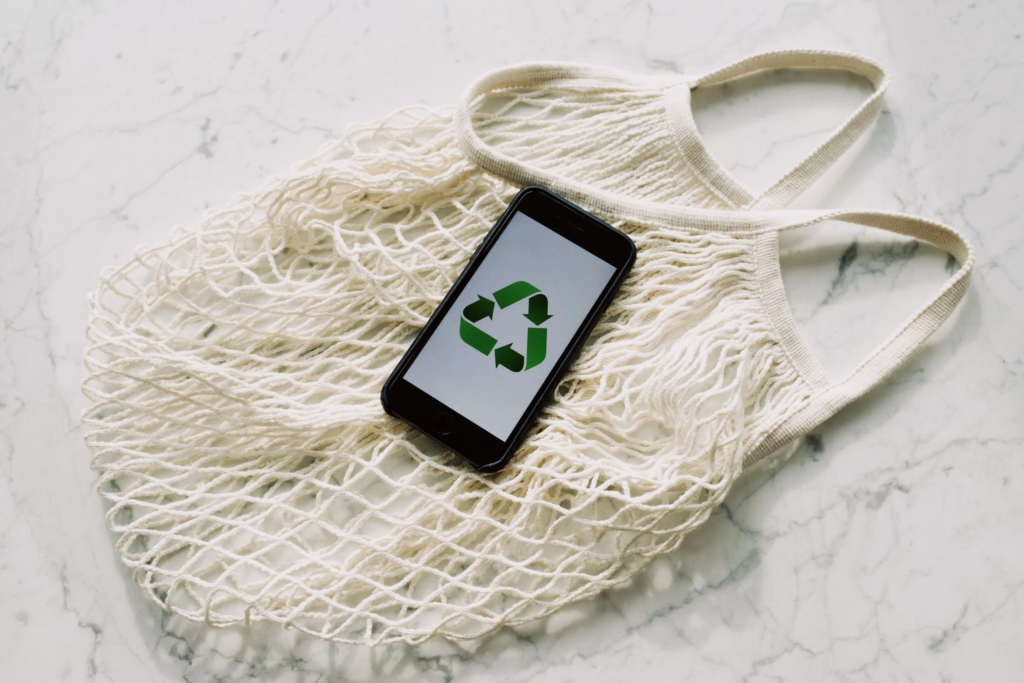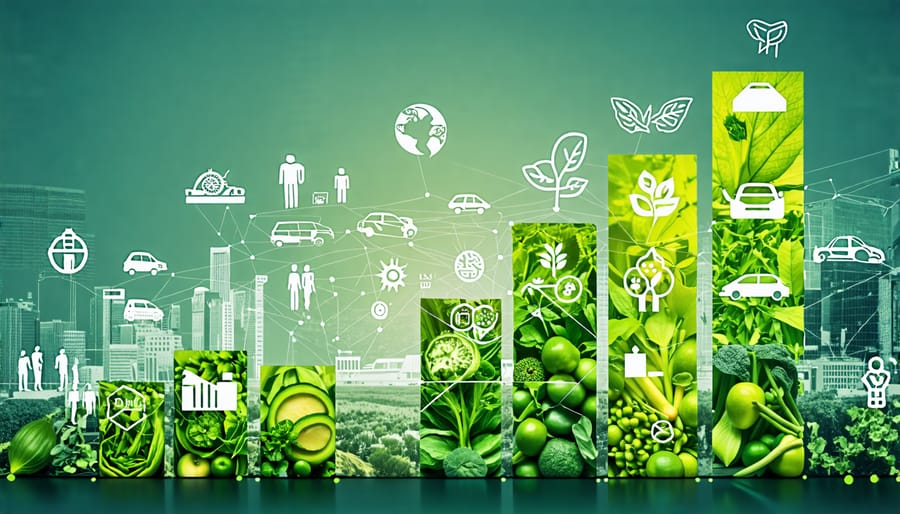As environmental concerns take center stage in the U.S., the tech industry is stepping up with innovative solutions that prioritize sustainability. In 2025, eco-friendly gadgets are not just a niche trend—they’re dominating consumer markets. From solar-powered smartphones to energy-efficient smart home devices, sustainable technology is reshaping how Americans interact with their gadgets. This shift reflects a growing demand for products that reduce environmental impact while maintaining functionality and convenience. Let’s explore the key sustainable tech trends driving this green revolution in 2025 and why they matter to consumers, businesses, and the planet.

The Rise of Eco-Conscious Consumers
American consumers are increasingly prioritizing sustainability when making purchasing decisions. A 2025 report shows that 91% of U.S. shoppers are expected to buy eco-friendly products this year, with 19.4% of retail spending dedicated to sustainable goods. This is a significant jump from previous years, with eco-friendly retail growing 71% faster than conventional retail markets. Consumers are willing to pay a premium—up to 27.6% more—for products that align with their environmental values. Millennials and Gen X shoppers, in particular, are leading the charge, with 73% of Millennials and 64% of Gen X prioritizing sustainable brands.
This shift isn’t just about feeling good—it’s about tangible action. Many Americans are skeptical of brands that make vague “green” claims, with 55% doubting the authenticity of eco-friendly marketing. To win trust, companies are focusing on transparency, offering certifications like ENERGY STAR and providing clear information about their products’ environmental impact. This consumer demand is pushing tech companies to innovate, creating gadgets that are not only high-performing but also kinder to the planet.

Solar-Powered Gadgets Lead the Charge
One of the standout trends in 2025 is the rise of solar-powered devices. Solar technology has moved beyond rooftop panels and into everyday gadgets, making renewable energy more accessible. Solar-powered smartphones, for example, are gaining traction. Brands like Samsung and Apple are experimenting with phones that feature built-in solar panels, allowing users to charge their devices using sunlight. These phones reduce reliance on traditional electricity grids, especially in areas with limited power access, and help lower energy bills.
Beyond smartphones, solar-powered chargers and portable solar generators are becoming must-haves for eco-conscious consumers. Products like the EcoFlow Power Hat, a sun hat with solar panels integrated into the brim, debuted at IFA 2024 and have captured attention for their innovative design. These devices are perfect for outdoor enthusiasts or anyone looking to reduce their carbon footprint during travel or emergencies. Solar-powered security cameras are also gaining popularity, eliminating the need for electrical wiring and making home security more sustainable.
Energy-Efficient Smart Homes
Smart home technology is getting a green makeover in 2025. Devices like smart thermostats, eco-friendly smart plugs, and energy-efficient appliances are helping households cut energy use and save money. The Nest Learning Thermostat, for instance, uses advanced AI to analyze usage patterns and adjust settings to minimize waste, reducing electricity bills and carbon footprints. Similarly, smart plugs with energy-monitoring features allow users to track and optimize their consumption in real time, often using recycled materials to enhance their sustainability credentials.
The integration of AI and Internet of Things (IoT) technology is making smart homes even greener. At CES 2025, Samsung unveiled its “Home AI” system, which seamlessly manages household devices to optimize energy use. These systems ensure that lights, heating, and appliances work together efficiently, creating a cohesive and eco-friendly home environment. As IoT connections are projected to reach 24 billion globally by 2025, these technologies are set to play a critical role in reducing energy consumption and emissions.
Refurbished and Modular Gadgets Gain Traction
The throwaway culture of consumer electronics is fading as Americans embrace refurbished and modular gadgets. The refurbished gadget market is booming, with a projected 51 million second-hand smartphones sold in 2025, valued at $4.6 billion. This trend is driven by both affordability and environmental consciousness, particularly among budget-conscious consumers in smaller cities and eco-aware urban dwellers. Refurbished devices offer a cost-effective way to own premium tech while reducing e-waste.
Modular designs are also making waves. Companies like Fairphone are leading the way with smartphones and laptops designed for easy repair and upgrades. These devices use replaceable parts, extending their lifespan and reducing the need for frequent replacements. In the U.S., new regulations are supporting this trend by requiring manufacturers to provide repair guides and spare parts, empowering consumers to fix their own devices. This shift toward repairability and recyclability is a game-changer, aligning with the circular economy principles that prioritize reuse and recycling.

Sustainable Materials and Biodegradable Accessories
Tech companies are increasingly using sustainable materials to meet consumer demand for eco-friendly products. Recycled plastics, biodegradable materials, and even innovative options like mushroom leather are appearing in gadgets and accessories. For example, the House of Marley No Bounds wireless speaker uses sustainably harvested cork, recycled plastics, and recyclable aluminum, combining eco-friendly design with a 10-hour battery life. Similarly, brands like Apple and Dell are incorporating 100% recycled aluminum into their laptops, reducing their environmental footprint.
Biodegradable phone cases, compostable packaging, and recyclable gaming accessories are also trending. Companies are designing products that are easier to disassemble for recycling, ensuring that materials can be reused rather than ending up in landfills. Consumers are responding positively, with 53% expressing a preference for products with eco-friendly packaging. This focus on sustainable materials not only reduces waste but also appeals to shoppers who want to support ethical and environmentally responsible brands.
Water-Saving Tech and Beyond
While energy efficiency is a major focus, water conservation is emerging as another key trend in sustainable tech. Smart irrigation systems, equipped with weather data and soil sensors, optimize water usage for gardens and farms, ensuring plants receive just the right amount of water. Water-efficient appliances, such as dishwashers and washing machines with smart sensors, are also gaining popularity, helping consumers save water and lower utility bills. These innovations highlight the tech industry’s commitment to addressing multiple environmental challenges.
Challenges and Opportunities
Despite the progress, challenges remain. High production costs for sustainable tech can make eco-friendly gadgets more expensive, limiting widespread adoption. Additionally, consumer awareness is still growing, and some remain skeptical about the effectiveness of green products, with 15% believing they are less effective than conventional alternatives. Greenwashing—when companies overstate their environmental credentials—also poses a risk, as it erodes consumer trust.
However, the opportunities are immense. As technology advances, production costs are expected to decrease, making sustainable gadgets more accessible. Government regulations, like those in the U.S. and EU, are pushing companies to prioritize repairability and recyclability, creating a more sustainable industry. Brands that communicate their eco-friendly initiatives effectively, using tools like ContactPigeon’s marketing automation, are also seeing increased customer loyalty and sales.
Why It Matters
The rise of sustainable tech trends in 2025 is more than a market shift—it’s a movement toward a greener future. By choosing eco-friendly gadgets, consumers can reduce their environmental impact, save money on energy and water bills, and support companies that prioritize ethical practices. For businesses, investing in sustainable tech is not only a way to meet consumer demand but also a strategy to boost operational resilience and financial performance. As one expert notes, “The future of consumer tech isn’t just about smarter devices—it’s about understanding and adapting to how people expect to interact with technology.”
For American consumers, the message is clear: small choices, like opting for a solar-powered charger or a refurbished smartphone, can make a big difference. With eco-friendly gadgets dominating the market, 2025 is the year to embrace sustainable tech and contribute to a healthier planet.
Must Read :- Hybrid Work Models Take Center Stage in 2025: How Google and Others Are Shaping the Future of Work






